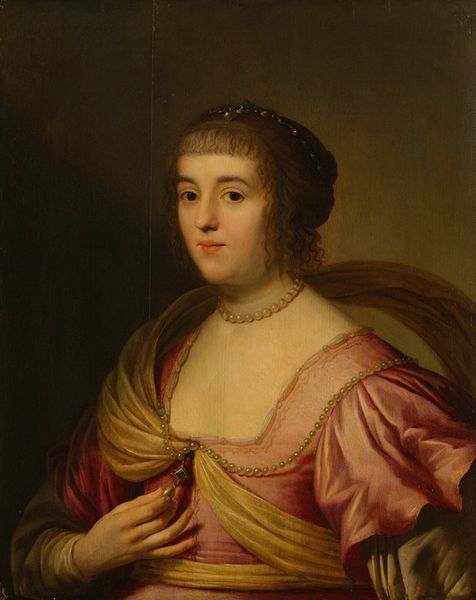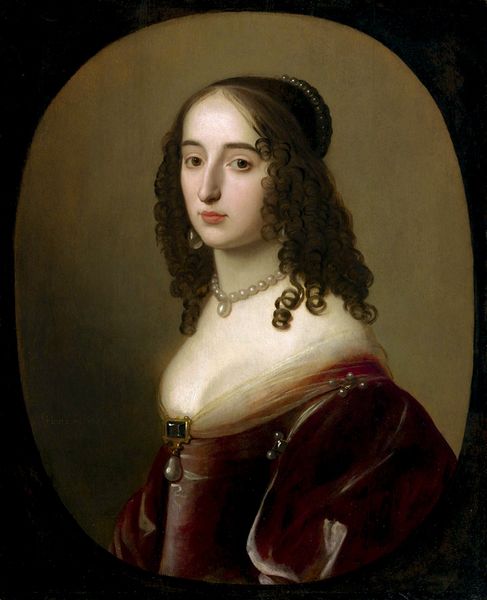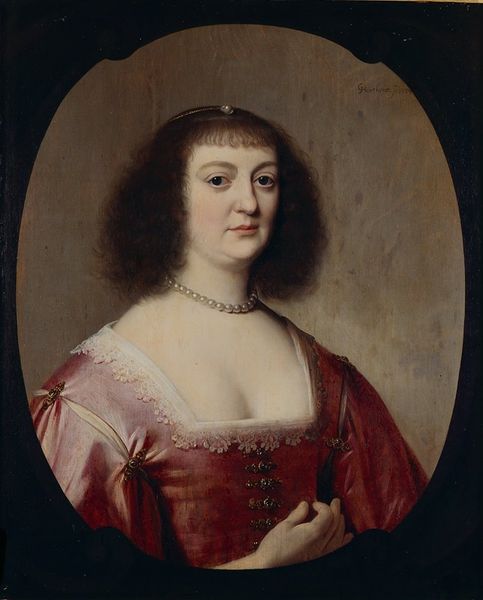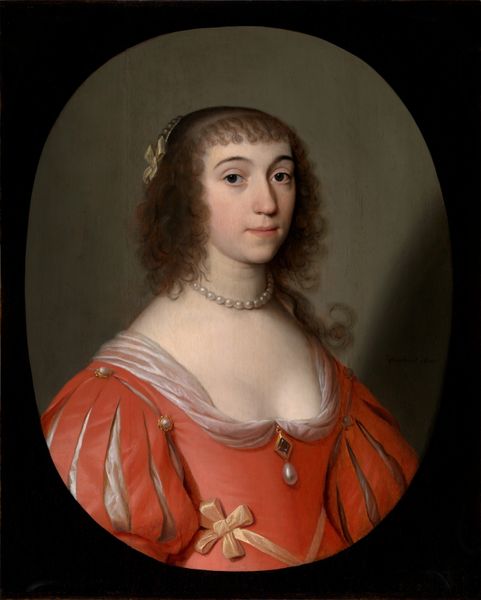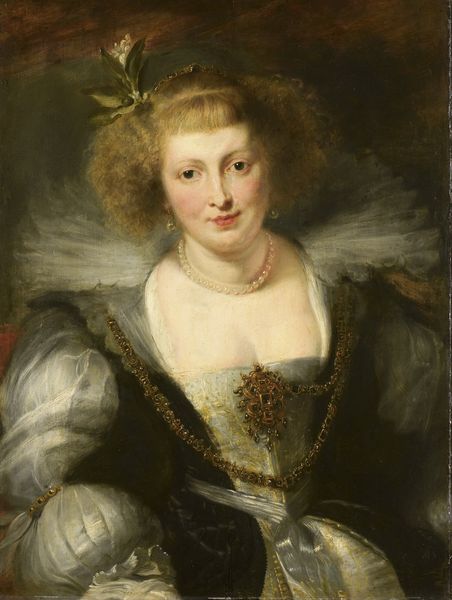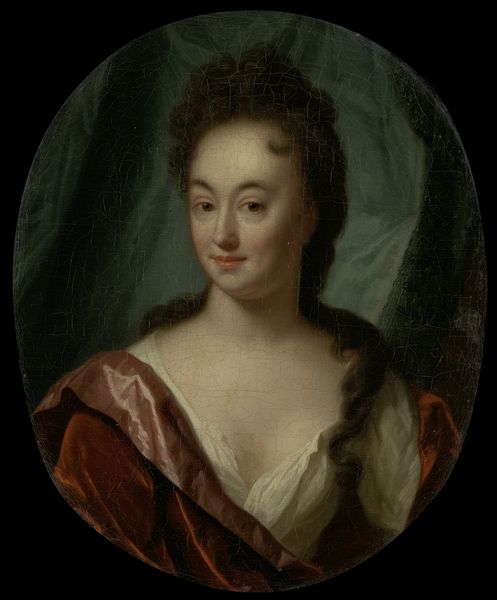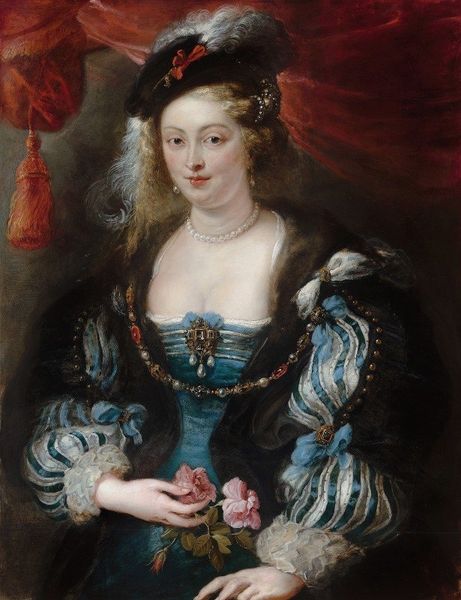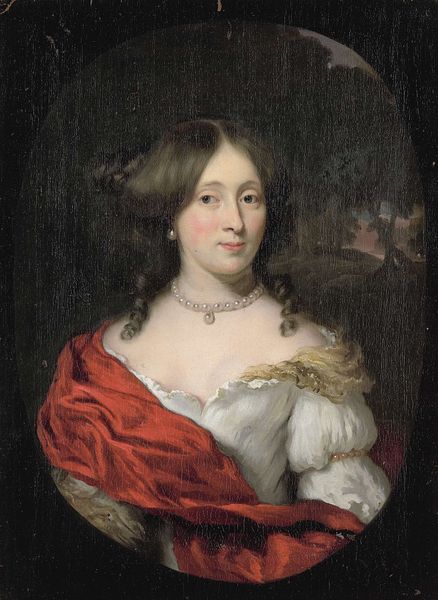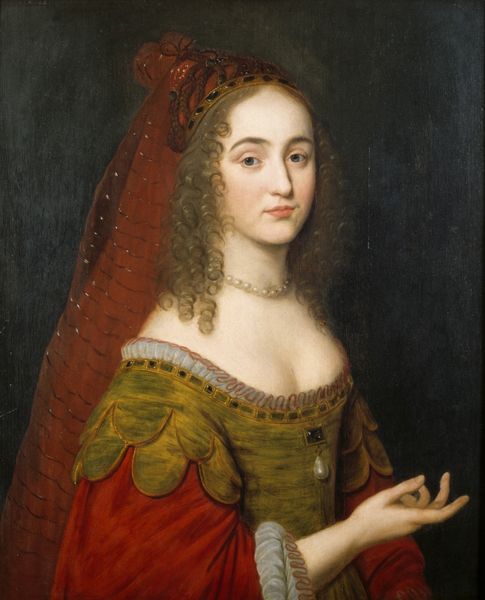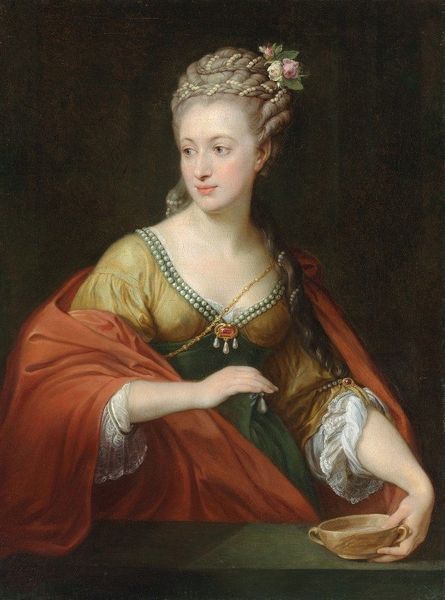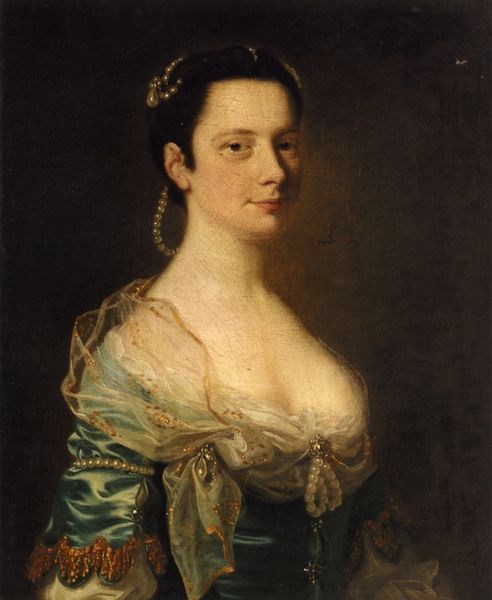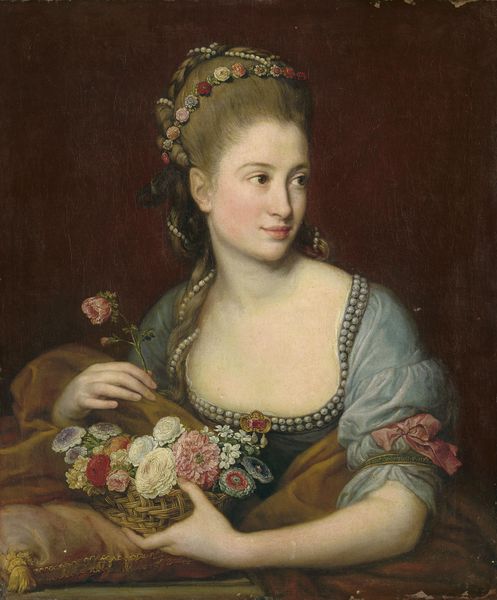
painting, oil-paint
#
portrait
#
baroque
#
painting
#
oil-paint
#
figuration
#
academic-art
Copyright: Public domain
Editor: Here we have Gerard van Honthorst’s 1632 painting, "Amalia van Solms," rendered in oil. I’m struck by the rich fabric and detailed jewelry; they communicate such opulence. What catches your eye when you look at this portrait? Curator: Well, immediately the textiles and their production. Think about the labor involved in creating such intricate patterns and the global trade networks that brought these materials to Honthorst's studio. Are those silks dyed with precious pigments? The pearls alone represent a whole industry of exploitation. This isn't just about aesthetics; it's about power. Editor: Power derived from controlling resources and labor, I see. It shifts my perspective. I had initially just admired the beauty. Curator: Exactly. Consider also the oil paint itself. Where did the pigments come from? Who ground them? This wasn't a simple transaction; the making of art involved many hands and complex economic structures. The final painting masks that reality, of course, creating an image of effortless wealth and beauty. Editor: So you’re suggesting that we should view it not just as art but as a record—almost evidence—of a system of labor and trade? Curator: Precisely! The canvas, the pigments, the clothing – everything speaks to a material reality often ignored in traditional art history. Even Honthorst's technique represents labor; the way he manipulates the paint becomes another layer in this story of production and consumption. Editor: That definitely changes my perception. It’s made me realize the layers of material involved in creating even a simple portrait. Curator: Hopefully, it’s made you curious to think about art as an economic, as well as an aesthetic, object.
Comments
No comments
Be the first to comment and join the conversation on the ultimate creative platform.
